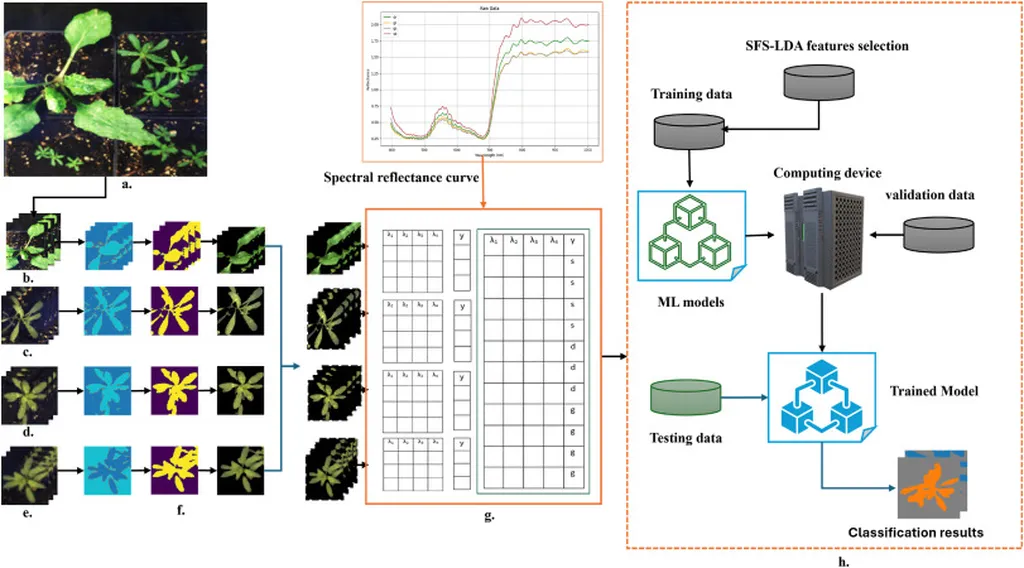In the relentless battle against weeds, rice farmers have long relied on labor-intensive methods that are as time-consuming as they are error-prone. But a new review published in *Frontiers of Agricultural Science and Engineering* suggests that hyperspectral imaging could revolutionize weed detection, offering a faster, more accurate, and cost-effective solution. The research, led by Syarifah Noor Irma Suryani Syd Ahmad of the Department of Crop Science at Universiti Putra Malaysia, explores how this cutting-edge technology can identify grass weeds in rice fields at their earliest stages, potentially transforming agricultural practices.
Grass weeds are a particularly stubborn foe for rice farmers. Their rapid growth and competitive nature can lead to significant yield losses if not managed effectively. Traditional methods of detection, such as visual inspections and hand-weeding, are not only labor-intensive but also prone to human error. Hyperspectral imaging, however, offers a promising alternative. This technology captures a vast amount of spectral information across numerous narrow wavelength bands, enabling the differentiation of various objects and materials based on their unique spectral signatures.
“Hyperspectral imaging has the potential to significantly improve the efficiency and accuracy of weed detection in rice fields,” says lead author Syarifah Noor Irma Suryani Syd Ahmad. “By identifying spectral signatures of grass weeds at early stages, farmers can take timely action to control infestations, ultimately leading to higher yields and reduced costs.”
The review examines the principles of hyperspectral imaging, its advantages over current methods, and the various techniques and approaches used in weed detection and classification. It also highlights the challenges and limitations associated with this technology, identifying potential areas for future research and development.
One of the key advantages of hyperspectral imaging is its ability to detect weeds at their earliest stages. This early detection allows for more effective and targeted herbicide application, reducing the need for broad-spectrum herbicides that can harm both the environment and the crop. Additionally, the technology can be integrated with precision agriculture tools, such as drones and satellites, to provide real-time, large-scale monitoring of rice fields.
The commercial impact of this technology on the agriculture sector could be substantial. By improving the efficiency and accuracy of weed detection, hyperspectral imaging can help farmers increase their yields and reduce their costs. This, in turn, can enhance the competitiveness of the agriculture sector, contributing to economic growth and food security.
As the technology continues to evolve, it is likely that hyperspectral imaging will become an increasingly important tool in the fight against weeds. Future research and development efforts should focus on addressing the challenges and limitations associated with this technology, such as the high cost of equipment and the need for specialized expertise. By overcoming these barriers, hyperspectral imaging can be made more accessible to farmers, particularly in developing countries where weed infestations are a major challenge.
In conclusion, the review by Syarifah Noor Irma Suryani Syd Ahmad and her colleagues provides a comprehensive overview of the application of hyperspectral imaging to identify spectral signatures of grass weeds in rice at early stages. The research highlights the potential of this technology to revolutionize weed detection and management, offering a faster, more accurate, and cost-effective solution for farmers. As the technology continues to evolve, it is likely that hyperspectral imaging will play an increasingly important role in the fight against weeds, contributing to the sustainability and competitiveness of the agriculture sector.

